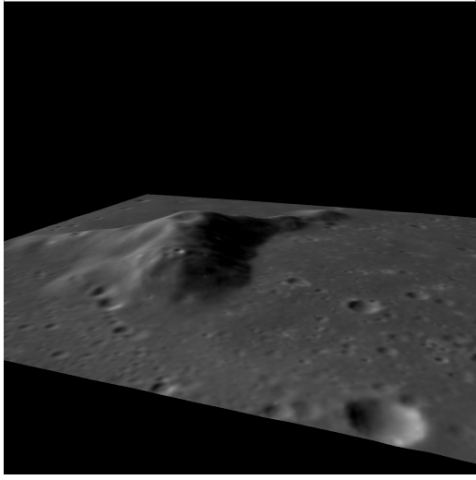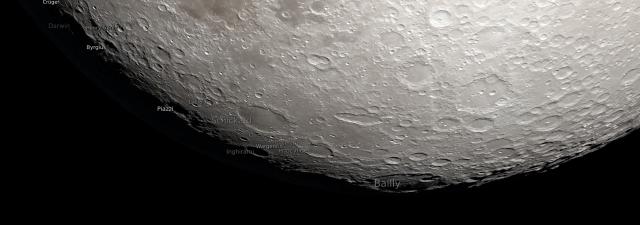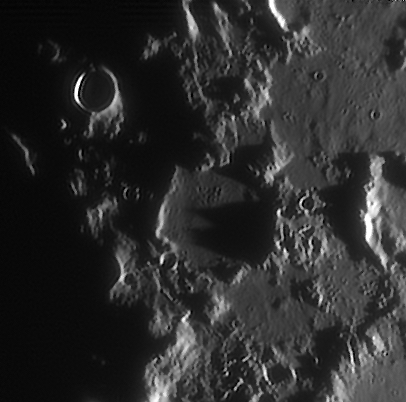Forum Replies Created
-
AuthorPosts
-
 Bill LeatherbarrowParticipant
Bill LeatherbarrowParticipantHi Mike – Raffaello Lena is misspelt on the list of Merlin recipients. Also I appear to be the only recent recipient in all the award lists with a title. It would be sensible to delete that and bring me into line with others. Otherwise, many thanks for your efforts!
16 March 2025 at 3:18 pm in reply to: Deep Sky Section Meeting – ticket bookings close on Friday at 10:00 #628862 Bill LeatherbarrowParticipant
Bill LeatherbarrowParticipant“God’s Own County”? Nobody told me that the meeting had been moved to Yorkshire….
 Bill LeatherbarrowParticipant
Bill LeatherbarrowParticipantThanks, Andy. No need for apologies – I appreciate that these things take time to sort!
Very best,
Bill Bill LeatherbarrowParticipant
Bill LeatherbarrowParticipantHi Andy,
I seem to have fallen victim to the “full name problem” reported by others. My preference is for “Bill Leatherbarrow” but it keeps defaulting to a rather pompous title plus full forenames on my web profile. I have changed this back on a few previous occasions, but now I cannot get through to edit my profile. Any suggestions?
Thanks in advance,
Bill Bill LeatherbarrowParticipant
Bill LeatherbarrowParticipantDenis,
so sorry to hear of this. I never met Rob, but am of course aware of his great contribution to the Lunar Section, often in difficult circumstances. I hope that a case for a Journal obituary can be made despite his not being a BAA member at the time of his death.
Bill
 Bill LeatherbarrowParticipant
Bill LeatherbarrowParticipantRother Valley Optics do a lot of EQ6 belt mods, so it might be worth giving them a ring for advice. Their shop is closed, but still manned, I think, and I have always found them very helpful.
Can’t help further with the mount, but it’s snowing heavily here in Sheffield so I’m prepared to make a good offer for your hot-water bottle…
Good luck!
Bill
 Bill LeatherbarrowParticipant
Bill LeatherbarrowParticipantInteresting issue, David – congratulations to you and your contributors!
Bill
 Bill LeatherbarrowParticipant
Bill LeatherbarrowParticipantHi James,
Good question!
The short answer is that because of the combination of various librations (libration in longitude, libration in latitude, and diurnal libration) the cycle of librations does not map onto the Moon’s monthly cycle. A more detailed explanation will require someone with a greater grasp of celestial mechanics and maths than I possess. Perhaps someone such will be along soon!
Bill
 Bill LeatherbarrowParticipant
Bill LeatherbarrowParticipantThis 3-D model, created using the Quickmap suite of tools, might help to clarify the situation.

 Bill LeatherbarrowParticipant
Bill LeatherbarrowParticipantMy guess would be that the central peak crater is just a perfectly positioned impact crater – the result of a ‘lucky strike’. Despite what Patrick Moore used to say, the ‘bomb’ does fall into the’bucket’ from time to time! I can see nothing to suggest the feature is of volcanic origin. The central peak complex is the result of ‘rebound’ following the impact that created Albategnius – it is not a volcanic cone with a summit caldera.
Sometimes, as in Gassendi’s central peak, what look like summit craters turn out to be just dimples between multiple peaks, but this one does indeed look like a proper crater.
Incidentally, the central peak complex appears to be off-centre, suggesting either that Albategnius might have been the result of an oblique impact or that the central peak was once a peak ring, the lower parts of which have been submerged beneath whatever has infilled Albategnius.
 Bill LeatherbarrowParticipant
Bill LeatherbarrowParticipantHi Gary! I am finding the supply of eggs in Sheffield to be highly variable. Would you like me to draw a curve when I have made enough observations…?
Very best!
Bill
 Bill LeatherbarrowParticipant
Bill LeatherbarrowParticipantHi Alan,
Difficult to be certain of identification without without seeing your sketch and knowing more details. It was certainly a favorable libration. Your best bet is the NASA Dial-a-Moon Phase and Libration 2019 website, which replicates phase and libration for whatever time you enter:
https://svs.gsfc.nasa.gov/4442
If you enter the date and time of your observation and then press the update button, the image will change to reflect the Moon’s appearance at that time. If you then click on the image you can download a detailed and zoomable image that should be identical to what you saw in your eyepiece and which identifies craters near the terminator. That should solve your problem.
Good luck!
Bill
 Bill LeatherbarrowParticipant
Bill LeatherbarrowParticipantAndrew,
Yes, that’s the one. It should help you find your way around the Moon using your refractor with a diagonal.
Happy hunting!
 Bill LeatherbarrowParticipant
Bill LeatherbarrowParticipantAndrew,
By far the best lunar atlas (and it fully meets your aesthetic criteria) is the one by Antonin Rukl, published some years ago by Sky Publishing. Unfortunately, it is now out of print and second-hand copies command very high prices.
Sky also publishes laminated maps of the Moon by Rukl, and these are still in print. They are available in normal and SCT-with-diagonal orientations. They are reasonably priced.
Hope this helps!
 Bill LeatherbarrowParticipant
Bill LeatherbarrowParticipantHi David,
The NASA app Dial-a-Moon, when set for the hour of your observation, replicates what you saw exactly. I attach a crop from what it throws up. If you don’t know the website (which is excellent) you can find it at https://svs.gsfc.nasa.gov/4442.

I think the key to understanding the impression you gained is that the terminator bisects the floor of the crater, leaving the curve of the far wall catching the light beyond the terminator and producing the impression of a raised hump.
Hope this helps
 Bill LeatherbarrowParticipant
Bill LeatherbarrowParticipantInteresting article, Jeremy. Blagg’s colleague on the Collated List of Lunar Formations, S.A. Saunder, also has a (somewhat larger) crater named for him on the Moon. Coincidentally, I imaged the latter on the evening of 11th April – although my effort is not quite as good as the LROC image of crater Blagg! Saunder was President of the BAA 1902-1904.

 Bill LeatherbarrowParticipant
Bill LeatherbarrowParticipantYes please, Tom. You can e-mail it to me at the address given inside the back page of the Journal.
Many thanks,
Bill
 Bill LeatherbarrowParticipant
Bill LeatherbarrowParticipantYes, several reliable reports have been received and images taken. There will be a fuller report in the next Lunar Section Circular.
 Bill LeatherbarrowParticipant
Bill LeatherbarrowParticipantThere have been several reports of a possible impact flash in the Byrgius-Lagrange area of the Moon, near the western limb, during the 21 January eclipse. It occurred at 04.41 UT and several observers managed to capture images of the event. There will be a full report in the February Lunar Section Circular, but in the meantime I would be grateful if members could check any images or video captures taken around that time.
 Bill LeatherbarrowParticipant
Bill LeatherbarrowParticipantComplete cloud cover here in Sheffield. Surprise, surprise! Nice images, Nick.
-
AuthorPosts
